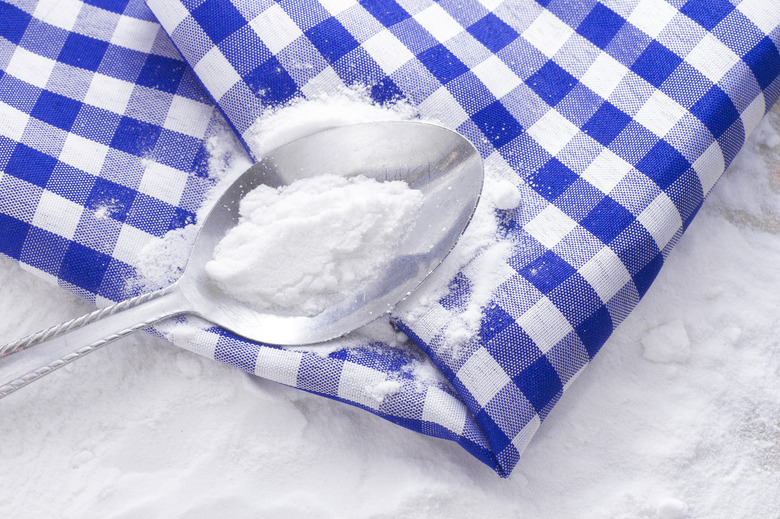Environmental Concerns With Sodium Bicarbonate
Baking soda, or sodium bicarbonate, is used in foods, cleaning products, cosmetics and other household items. It's also used in pesticides. The Environmental Protection Agency lists sodium bicarbonate as "generally recognized as safe." It's a naturally occurring compound found almost everywhere, but there are still some environmental concerns regarding this common compound.
Toxicity to Animals
Toxicity to Animals
Most animals do not have a bad reaction to sodium bicarbonate, but according to the Materials Safety Data Sheet used by chemical companies that use sodium bicarbonate, some animals can be harmed by high doses of this compound. Among those listed are the water flea, the bluegill and the diatom.
Mutagenic Properties
Mutagenic Properties
Some chemical compounds can have a mutagenic affect on certain animals. Sodium bicarbonate is harmless to ecosystems and animals in small amounts, but in large amounts it may damage the reproductive system of certain species. Researchers continue to investigate its effects. So far, tests have focused on the effects of large oral doses in rats.
Persistence
Persistence
The EPA considers sodium bicarbonate to have a minimal environmental impact. However, the equivalent organization in Canada has flagged sodium bicarbonate for "suspected persistence." That means that sodium bicarbonate may not break down and re-enter the ecosystem in a timely way.
Disposal Concerns
Disposal Concerns
Like all chemical compounds, it's important that businesses that use large amounts of sodium bicarbonate dispose of it properly to mitigate any damage it might possibly do to the environment. Organizations and companies that use this compound must follow local, state and federal laws regarding its proper disposal.
Cite This Article
MLA
Robson, Heather. "Environmental Concerns With Sodium Bicarbonate" sciencing.com, https://www.sciencing.com/environmental-concerns-sodium-bicarbonate-6403726/. 22 November 2019.
APA
Robson, Heather. (2019, November 22). Environmental Concerns With Sodium Bicarbonate. sciencing.com. Retrieved from https://www.sciencing.com/environmental-concerns-sodium-bicarbonate-6403726/
Chicago
Robson, Heather. Environmental Concerns With Sodium Bicarbonate last modified August 30, 2022. https://www.sciencing.com/environmental-concerns-sodium-bicarbonate-6403726/
